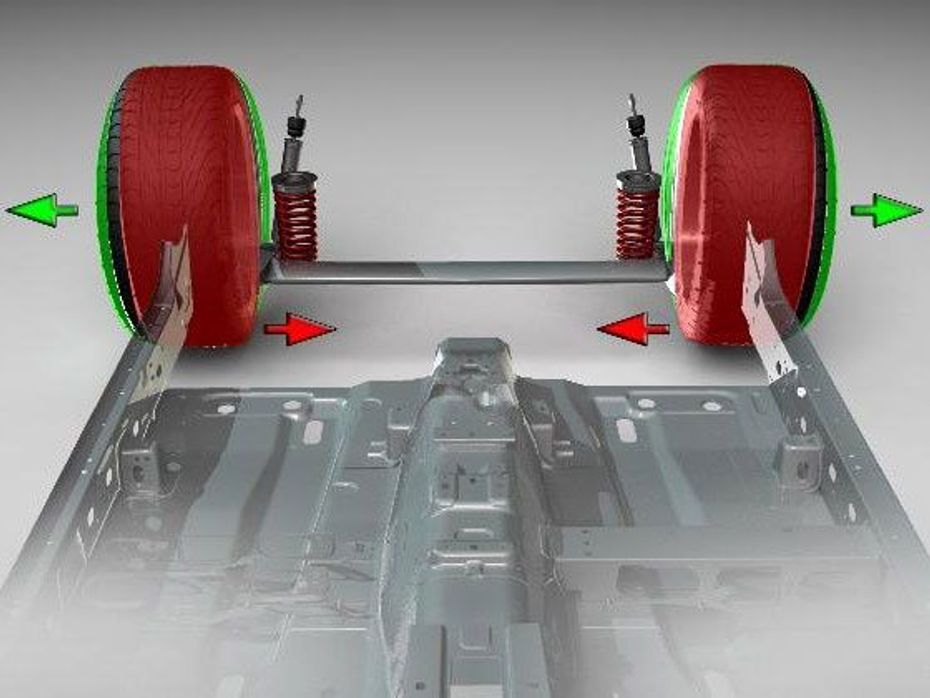
Are Maruti Suzuki’s Strong Hybrid Powertrains The Best Engine...
- Apr 25, 2024
- Views : 21964

Camber angle is used in the design of the steering and suspension setups of a car. Camber angle is the angle vertical axis of the wheel in relation to the vertical axis of the vehicle when viewed from the front or the back. If the top of the wheel leans away from the engine compared to the bottom of the wheel it is called positive camber. If the bottom of the wheel leans towards the engine compared to the top of the wheel it is called negative camber.

Camber angle alters the handling qualities of a car. Negative camber improves grip while cornering as it places the tyre at a better angle on the road. While cornering a car experiences roll. If the tyre had negative camber the inside of the tyre would try to lift off the ground reducing the contact area of the tyre with the road. Negative camber reduces the chances of the inside of a tyre lifting off thereby aiding handling by increasing the contact area with the road. Negative camber is benefitial for the outside wheel while the inside wheel would benefit most from positive camber.
A car with zero camber would have the largest tyre contact area with the road which would increase straight line speed. The suspension has to be designed in such a way as to have a camber angle which improves the handling traits of a car while having maximum tyre contact patch with the road.

Are Maruti Suzuki’s Strong Hybrid Powertrains The Best Engine...

Mahindra XUV 3XO (XUV300 Facelift) Launched With Significant Design...

3 New Major Design Details Mahindra XUV 3XO Will Pack Over...

Tata Curvv: A Much Clearer Look At Its Interior Ahead Of Its Unveiling

2024 Mahindra XUV 3XO Interior Revealed: Old vs New Compared

Overview In 10 Images: Mahindra XUV 3XO Mid-Spec MX3 Variant

10 New Features Expected In The Upcoming 2024 Mahindra XUV 3XO...

Mahindra XUV 3XO: All Details You Need To Know In 10 Images

5 Features Upcoming 2024 Maruti Suzuki Dzire Is Expected To Get Over...
India's largest automotive community